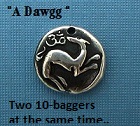![[image]](http://si.wsj.net/public/resources/images/BF-AE318_STOXSU_NS_20130201171803.jpg)
A change appears to have started late last year, according to Lipper's weekly data. In December, investors added $10 billion to stock mutual funds and exchange-traded funds and pulled a net $169 million from corporate and municipal bond funds. In November, investors added $1.8 billion to stock funds, while bond funds picked up $12 billion.
Investors and strategists are watching to see if the move is the start of a rotation out of bonds and into stocks. Wall Street strategists predict lower returns for bonds this year than they enjoyed in 2012.
"We've been gradually paring down our fixed-income allocation for a couple of years now, and we're certainly not adding to it," said Pat Dorsey, president of Sanibel Captiva Investment Advisers. With few exceptions, "we just can't find really anything in the [bond] market that makes sense to us."
Some question whether short-term floods of cash make much of a difference. David Kostin, chief U.S. equity strategist with Goldman Sachs Group Inc., GS +1.38% wrote a note to clients Thursday saying the weekly flows and investor positioning "do not drive equity returns." Instead, he found that investors' positioning in futures on the Standard & Poor's 500-stock index is a good contrarian indicator of where stocks will move, the S&P 500, at least.
The firm created a sentiment indicator that compares positions in S&P 500 futures with historical levels. If investment funds have high net positions in S&P 500 futures over time, typically the stock market will fall over the following month, he said in the note. When funds have low net positions in S&P 500 futures, stocks have risen, on average, over the following month, Mr. Kostin said. He said funds' current positions in S&P 500 futures are "elevated but not extreme," meaning positions would need to rise for the indicator to bode ill for stocks.
Separately, TrimTabs Investment Research said Friday that $77 billion flowed into stock funds in January.
Write to Alexandra Scaggs at alexandra.scaggs@dowjones.com


![[image]](http://si.wsj.net/public/resources/images/BF-AE318_STOXSU_NS_20130201171803.jpg)